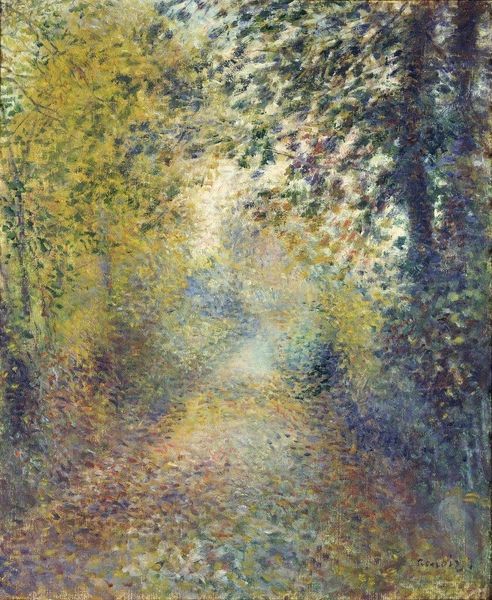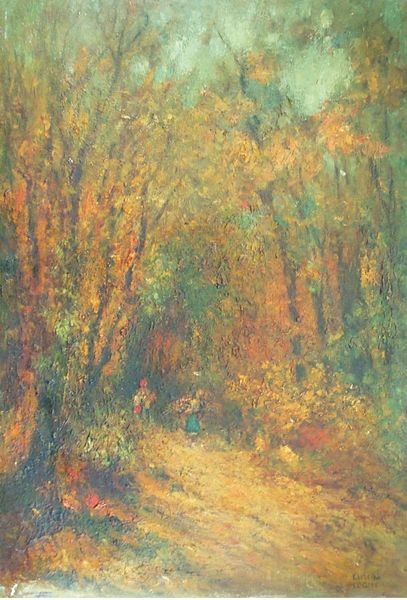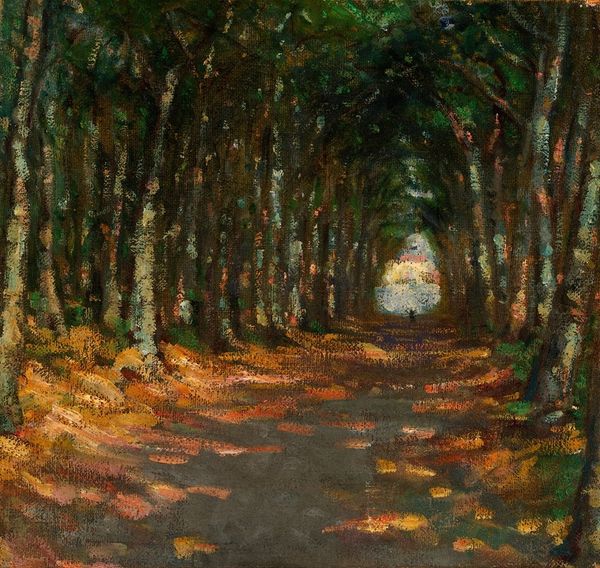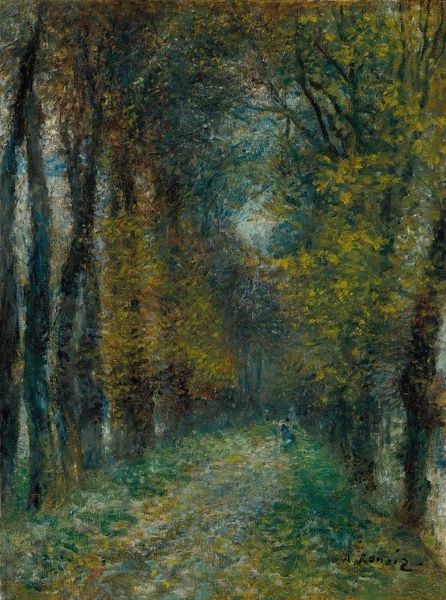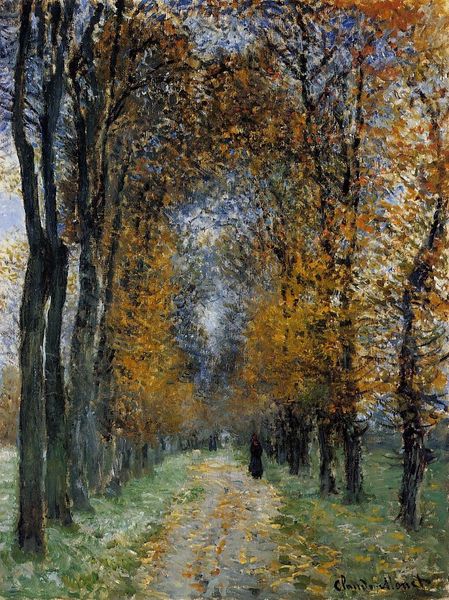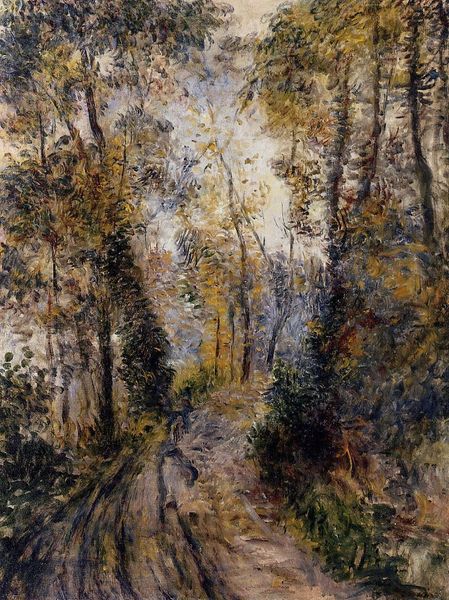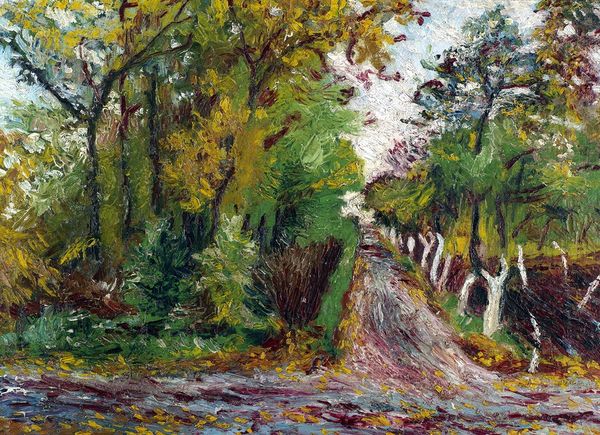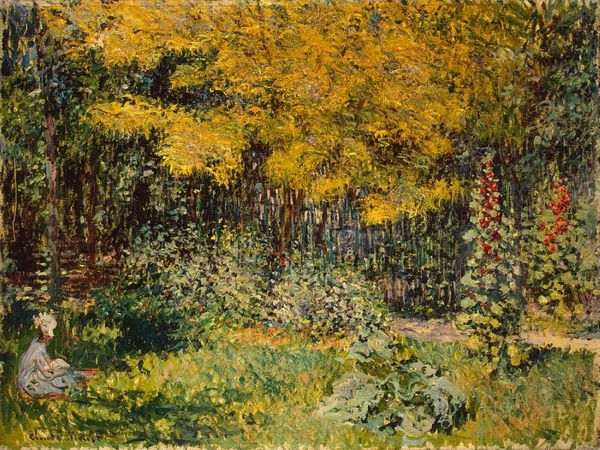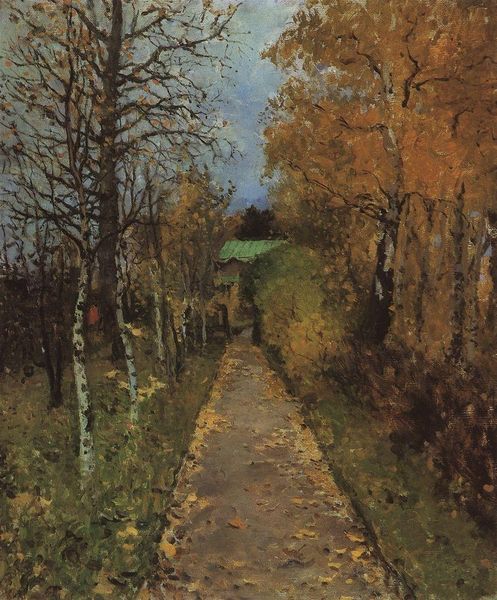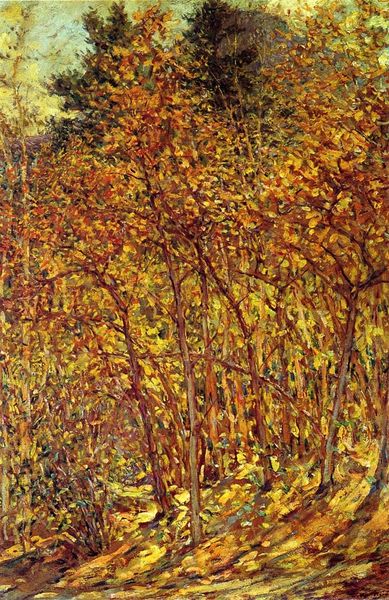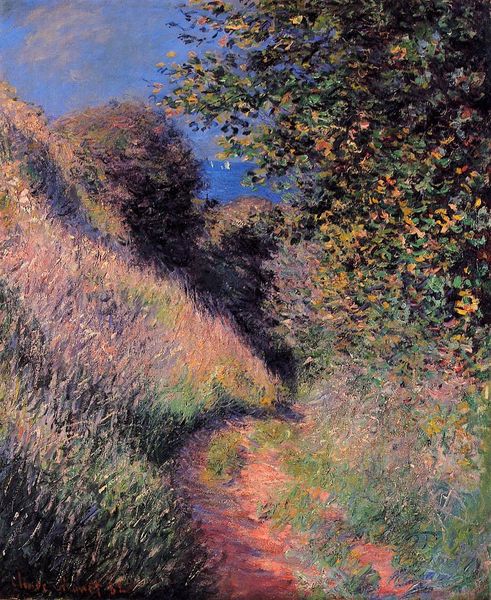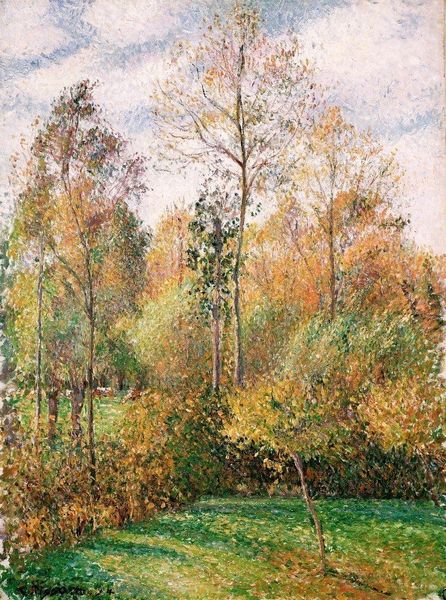
Copyright: Public domain
Editor: We're looking at Camille Pissarro’s “A Path in the Woods, Pontoise,” painted in 1879 with oils, en plein air. The impasto is so thick; you can almost feel the leaves crunching underfoot. What stands out to you when you examine this artwork? Curator: I'm immediately drawn to the materiality of the paint itself, and how that speaks to Pissarro’s labor. Consider the physical act of applying these layers of oil paint. This wasn't a seamless, polished surface. We see evidence of the artist's hand, his choices in how he manipulated the materials to mimic nature. What does this raw approach to the materials convey about the relationship between the artist and his subject, the landscape? Editor: It makes it feel less idealized, maybe more honest? Like a working-class perspective on nature, instead of a bourgeois fantasy? Curator: Precisely! Pissarro, alongside other Impressionists, was disrupting the traditional hierarchy that elevated history painting above landscape. This piece asks us to consider the social context of artistic production. What was the role of the artist in late 19th-century France, and how did Pissarro challenge established norms through his embrace of a seemingly mundane subject and visible brushwork? Editor: So, it's not just a pretty landscape; it's a statement about art and society? Curator: Absolutely. It reflects a changing landscape, literally and figuratively. The increasing industrialization affected the lifestyle depicted here and, too, changes how we think about art's place and function, which are affected by patronage, economic circumstances, and social expectations. Editor: That gives me a lot to think about. I'll definitely look at Impressionist landscapes differently from now on. Curator: And I hope you consider the active labor that went into these landscape works; how they affected the economic value placed on these art objects!
Comments
No comments
Be the first to comment and join the conversation on the ultimate creative platform.
